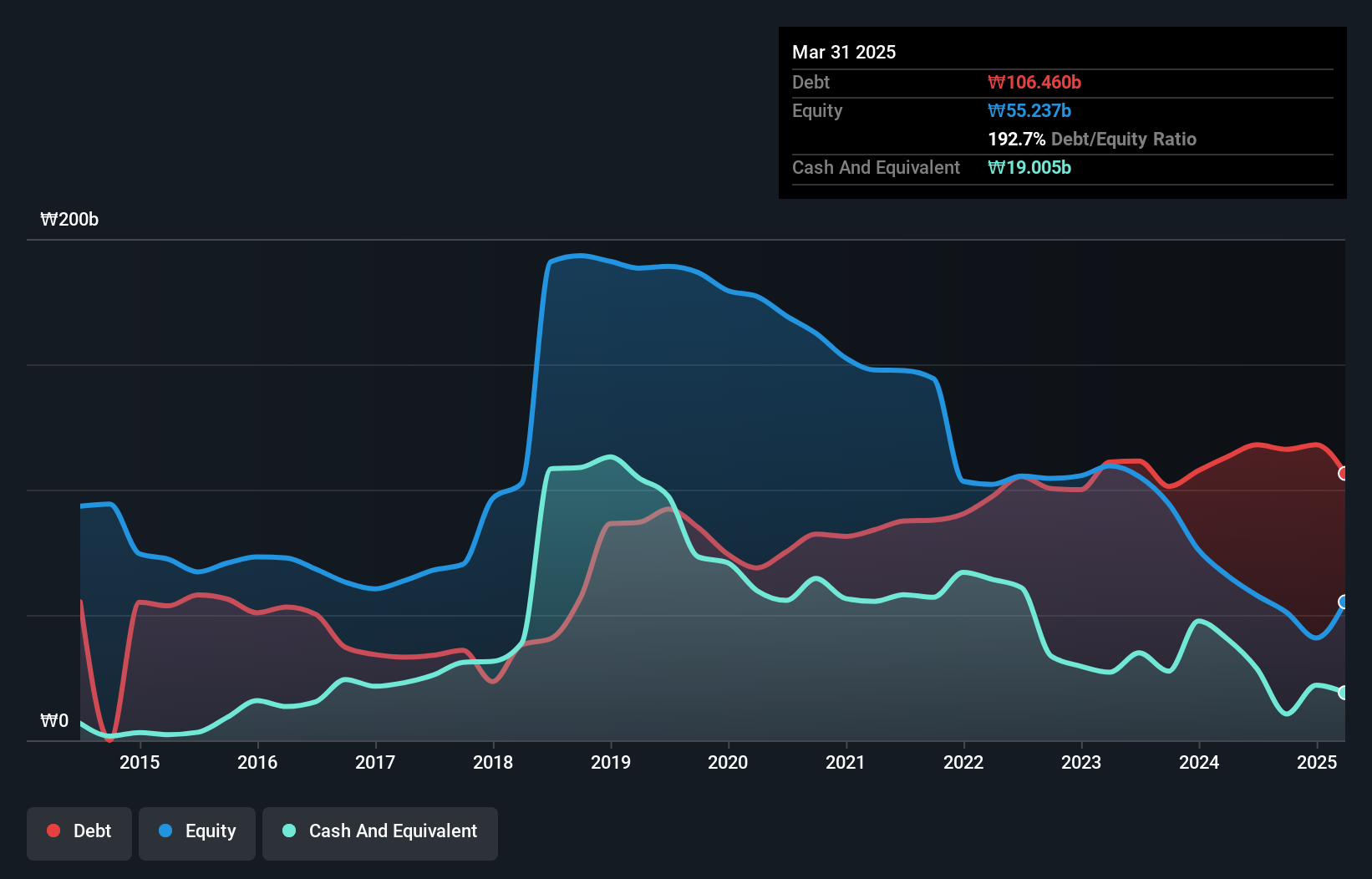- South Korea
- /
- Communications
- /
- KOSDAQ:A010170
Does Taihan Fiber Optics (KOSDAQ:010170) Have A Healthy Balance Sheet?
Legendary fund manager Li Lu (who Charlie Munger backed) once said, 'The biggest investment risk is not the volatility of prices, but whether you will suffer a permanent loss of capital.' So it might be obvious that you need to consider debt, when you think about how risky any given stock is, because too much debt can sink a company. We can see that Taihan Fiber Optics Co., Ltd (KOSDAQ:010170) does use debt in its business. But should shareholders be worried about its use of debt?
What Risk Does Debt Bring?
Debt is a tool to help businesses grow, but if a business is incapable of paying off its lenders, then it exists at their mercy. Part and parcel of capitalism is the process of 'creative destruction' where failed businesses are mercilessly liquidated by their bankers. While that is not too common, we often do see indebted companies permanently diluting shareholders because lenders force them to raise capital at a distressed price. Of course, plenty of companies use debt to fund growth, without any negative consequences. When we think about a company's use of debt, we first look at cash and debt together.
What Is Taihan Fiber Optics's Debt?
The image below, which you can click on for greater detail, shows that Taihan Fiber Optics had debt of ₩106.5b at the end of March 2025, a reduction from ₩113.2b over a year. However, it also had ₩19.0b in cash, and so its net debt is ₩87.5b.

A Look At Taihan Fiber Optics' Liabilities
We can see from the most recent balance sheet that Taihan Fiber Optics had liabilities of ₩128.4b falling due within a year, and liabilities of ₩23.8b due beyond that. Offsetting this, it had ₩19.0b in cash and ₩24.6b in receivables that were due within 12 months. So its liabilities total ₩108.6b more than the combination of its cash and short-term receivables.
When you consider that this deficiency exceeds the company's ₩90.5b market capitalization, you might well be inclined to review the balance sheet intently. Hypothetically, extremely heavy dilution would be required if the company were forced to pay down its liabilities by raising capital at the current share price. When analysing debt levels, the balance sheet is the obvious place to start. But you can't view debt in total isolation; since Taihan Fiber Optics will need earnings to service that debt. So if you're keen to discover more about its earnings, it might be worth checking out this graph of its long term earnings trend.
Check out our latest analysis for Taihan Fiber Optics
In the last year Taihan Fiber Optics had a loss before interest and tax, and actually shrunk its revenue by 2.2%, to ₩145b. That's not what we would hope to see.
Caveat Emptor
Over the last twelve months Taihan Fiber Optics produced an earnings before interest and tax (EBIT) loss. Indeed, it lost a very considerable ₩27b at the EBIT level. Considering that alongside the liabilities mentioned above make us nervous about the company. We'd want to see some strong near-term improvements before getting too interested in the stock. Not least because it had negative free cash flow of ₩23b over the last twelve months. So suffice it to say we consider the stock to be risky. When analysing debt levels, the balance sheet is the obvious place to start. But ultimately, every company can contain risks that exist outside of the balance sheet. We've identified 4 warning signs with Taihan Fiber Optics (at least 3 which are significant) , and understanding them should be part of your investment process.
At the end of the day, it's often better to focus on companies that are free from net debt. You can access our special list of such companies (all with a track record of profit growth). It's free.
Valuation is complex, but we're here to simplify it.
Discover if Taihan Fiber Optics might be undervalued or overvalued with our detailed analysis, featuring fair value estimates, potential risks, dividends, insider trades, and its financial condition.
Access Free AnalysisHave feedback on this article? Concerned about the content? Get in touch with us directly. Alternatively, email editorial-team (at) simplywallst.com.
This article by Simply Wall St is general in nature. We provide commentary based on historical data and analyst forecasts only using an unbiased methodology and our articles are not intended to be financial advice. It does not constitute a recommendation to buy or sell any stock, and does not take account of your objectives, or your financial situation. We aim to bring you long-term focused analysis driven by fundamental data. Note that our analysis may not factor in the latest price-sensitive company announcements or qualitative material. Simply Wall St has no position in any stocks mentioned.
About KOSDAQ:A010170
Taihan Fiber Optics
Researches, develops, and produces optical materials in South Korea and internationally.
High growth potential with mediocre balance sheet.
Market Insights
Weekly Picks


Crazy Undervalued 42 Baggers Silver Play (Active & Running Mine)


Fiducian: Compliance Clouds or Value Opportunity?

Willamette Valley Vineyards (WVVI): Not-So-Great Value
Recently Updated Narratives

SLI is share to watch next 5 years


The "Molecular Pencil": Why Beam's Technology is Built to Win

PRME remains a long shot but publication in the New England Journal of Medicine helps.
Popular Narratives


MicroVision will explode future revenue by 380.37% with a vision towards success


NVDA: Expanding AI Demand Will Drive Major Data Center Investments Through 2026




